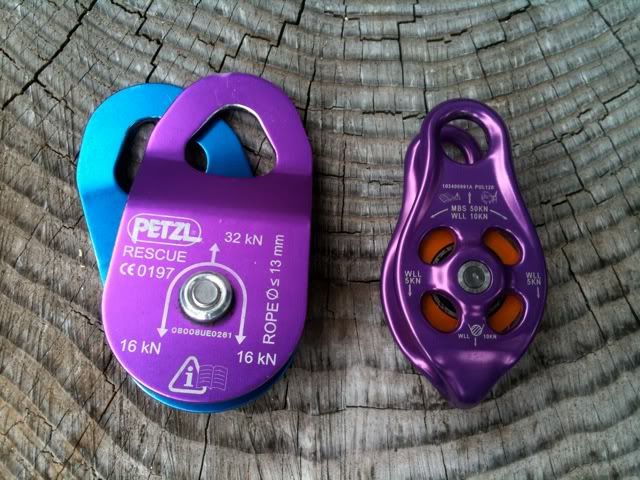On same axle types, would be close. If bushing setup has aluminum or other non-steel axle, then not so much. In single pulley redirect, not much to sweat here. But, small differences would add up / multiply out the inefficiencies in multiple pulley system.
The larger/ 2" support, wouldn't work the rope as much due to bend radius forcing outer fibers to carry more force as inner are compressed(rope only works tensioned direction, not compressed).
Also, i think we are talking about sintered (pressed metal powder heated to just below melting so joins porously, then heavy oil drawn in to pore passes, oil only comes out when spinning, then drawn back in when not spinning ) bushings; but if not sintered, then less efficient bushing being considered usually.
Friction of axle bearings/bushing is base friction, then sheave radius ratio to axle gives leverage over these frictions. But actually, larger rope that carrys force mostly on outside fibers, would then give some more efficiency, as outer rope arc is the actual leverage point, rather than sheave size itself. Also, theoretically larger pulley takes less revs, so lasts longer. Bushings spread loading out farther, can take more impacts.
There are definitely 3" + 4" pulleys, many w/bearings. Some even larger with zerks.
If person coming out of tree acts as ballast to person floating up, would consider Prussic minding setup or pulley. Also, if 1 person on setup works on other leg, gets 2xEffort, like climber lifting self.

